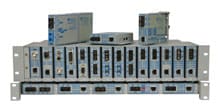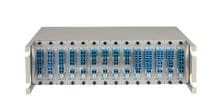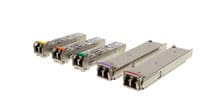- Products
- PoE Media Converters and Switches
- Ethernet & PoE Switches Product Selector
- Multi-Gigabit Ethernet and PoE Switches
- PoE PSE Commercial Switches
- PoE PSE Industrial Fiber Switches
- PoE Industrial Copper Extenders
- PoE Powered Media Converters
- PoE PSE Media Converters
- PoE Extenders & Injectors Product Selector
- Pluggable Transceivers Product Selector
- Single Pair PoE Products
- Product Lines
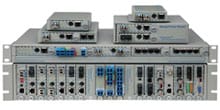
- iConverter Managed Multi-service Platform
- Copper to Fiber Media Converters
- Ethernet Media Converters
- 10 Gigabit Copper-to-Fiber
- 10/100/1000 Copper to 10 Gigabit Fiber
- 10/100/1000 Copper-to-Fiber with Integrated Management
- 10/100/1000 Industrial Copper-to-Fiber with Integrated Management
- 10/100/1000 Copper-to-Fiber with VLAN
- 10/100/1000 Dual Media Converter with VLAN
- Gigabit Copper-to-Fiber
- 10/100 Copper-to-Fiber with Integrated Management
- 10/100 Industrial Copper-to-Fiber with Integrated Management
- 10/100 Copper-to-Fiber with VLAN
- 10/100 Copper-to-Fiber
- Fast Ethernet Copper-to-Fiber
- Fast Ethernet Redundant Links
- 10Mbps Copper-to-Fiber
- 10Mbps Copper to Coax
- TDM Media Converters
- Serial Media Converters
- Ethernet Media Converters
- Fiber to Fiber Media Converters
- 10 Gigabit Fiber-to-Fiber Converter and Transponder
- 10 Gigabit Industrial Converter and Transponder
- SFP-to-SFP Fiber Converter and Transponder
- SFP-to-SFP Industrial Fiber Converter and Transponder
- Gigabit Fiber to-Fiber with 3 Rs
- 100/1000 Fiber-to-Fiber with 3 Rs
- Gigabit Fiber-to-Fiber
- Fast Ethernet Fiber-to-Fiber with 3 Rs
- Fast Ethernet Fiber-to-Fiber
- OC-3/STM-1 Fiber-to-Fiber
- OC-12/STM-4 Fiber-to-Fiber
- Carrier Ethernet Network Interface Devices
- CE 2.0 - 10G Demarcation NID
- CE 2.0 - 10G Demarcation and Aggregation NID
- CE 2.0 - 10/100/1000 Mult-port NID
- CE 2.0 - 10/100/1000 Mult-port NID with PoE
- CE 2.0 - 10/100/1000 8-Port NID
- SFP NID - Gigabit SFP NID
- microNID - 100/1000 compact NID
- CE 1.0 Service OAM - 10/100/1000 NID
- CE 1.0 Link OAM - 10/100/1000 Copper-to-Fiber NID
- CE 1.0 Link OAM - 10/100 Copper-to-Fiber NID
- CE 1.0 Link OAM - Gigabit Fiber-to-Fiber NID
- CE 1.0 Link OAM - Fast Ethernet Fiber-to-Fiber NID
- CWDM Multiplexers
- T1/E1 Multiplexers
- Ethernet Switch Modules
- Management System
- Chassis Options

- 1-Module Industrial Chassis
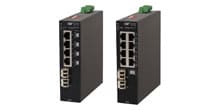
- RuggedNet Industrial Switches and Extenders
- Industrial PoE PSE Fiber Switches
- Multi-Gigabit Managed Industrial PoE+/BT Switches
- Multi-Gigabit Unmanaged Industrial PoE+/BT Switches
- 10G Managed 802.3bt PoE Switches
- 10G Unmanaged 802.3bt PoE Switches
- 10G Managed PoE+ Switches
- 10G Unmanaged PoE+ Switches
- 1G Managed PoE+ Switches
- 1G Unmanaged PoE+ Switches
- 1G Unmanaged 802.3bt PoE Switches
- 1G Managed 802.3bt PoE Switches
- Industrial SPE Switches
- Industrial Ethernet Switches
- Industrial PoE Copper Extenders
- Industrial Power Supplies

- OmniConverter Media Converter, Switches and Extenders
- PoE PSE Media Converters
- 10G Multi-Gigabit / Multi-Rate PoE Media Converter
- 10G Multi-Gigabit / Multi-Rate Media Converter
- 10/100 Multi-port PoE+ Media Converter
- 10/100 PoE+ Media Converter
- 10/100/1000 Multi-Port PoE+ Media Converter
- Industrial 10/100/1000 Multi-Port PoE+ Media Converter
- 10/100/1000 PoE+ Media Converter
- 10/100/1000 PoE++ 60W-100W Media Converter
- Industrial 10/100 Multi-port PoE+ Media Converter
- 1U Rack-Mount Shelf
- PoE PSE Compact Switches
- Multi-Gigabit Managed PoE+/BT Switches
- Multi-Gigabit Unmanaged PoE+/BT Switches
- 10G Managed 802.3bt PoE Switches
- 10G Unmanaged 802.3bt PoE Switches
- 10G Managed PoE+ Switches
- 10G Unmanaged PoE+ Switches
- 1G Managed PoE+ Switches
- 1G Unmanaged PoE+ Switches
- 1G Managed 802.3bt PoE Switches
- 1G Unmanaged 802.3bt PoE Switches
- Ethernet Switches
- PoE Copper Extenders
- Single Pair Ethernet (SPE)
- PoE Injectors
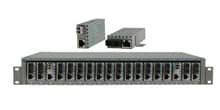
- miConverter Unmanaged Miniature Media Converters
- 10/100/1000 Copper-to-Fiber
- Industrial 10/100/1000 Copper-to-Fiber
- 10/100/1000 Ultra-Compact Copper-to-Fiber
- Gigabit Copper-to-Fiber
- 10/100/1000 Copper-to-Fiber PoE Powered
- 10/100 Copper-to-Fiber
- 10/100 Ultra-Compact Copper-to-Fiber
- 10/100 Copper-to-Fiber PoE Powered
- 18-Module Chassis
- Industrial 10/100 Copper-to-Fiber PoE Powered
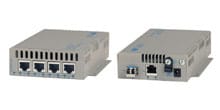
- FlexSwitch Compact Switches
- Solutions
- Company
- Support
- How to Buy
What is a Fiber Ring & its Advantages

Fiber rings refer to configurations or architectures used in fiber optic networks, often employed in telecommunications to ensure high-speed data transmission with redundancy and reliability. Understanding fiber rings and related terms is crucial for anyone involved in network design, implementation, or management.
Below are the main concepts and terms associated with fiber rings:
Fiber Optic Ring:
A fiber optic ring is a network topology where fiber optic cables form a loop or ring. Each node (switch, router, or other network devices) is connected to two other nodes, forming a closed-loop structure. This design along with ring protection protocols provides resilience because if one part of the ring fails, data can still travel in the opposite direction to reach its destination, ensuring continuous operation.
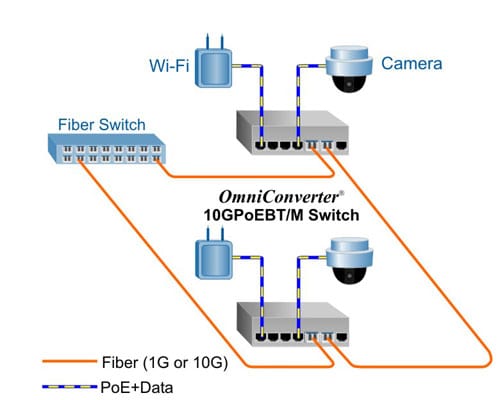
Ring Topology:
A network topology known as ring topology forms a circular data channel between every node and exactly two additional nodes. It is often used in local area networks (LANs) but is especially relevant in fiber optic networks due to its inherent fault tolerance.
Self-Healing Rings:
A self-healing ring is a fiber optic ring that can reroute traffic automatically in case of a failure or break in the ring. It utilizes mechanisms like Automatic Protection Switching (APS), which quickly switches the data path to the backup route in milliseconds, minimizing downtime.
Dual Ring:
Dual ring topology consists of two rings running in parallel. This setup enhances redundancy by allowing traffic to be rerouted on a separate ring if one fails. An example of this is the SONET/SDH (Synchronous Optical Networking/Synchronous Digital Hierarchy) dual-ring architecture, commonly used in telecommunications.
Metro Ring:
A Metro ring refers to a fiber ring that covers a metropolitan area, connecting multiple locations such as data centers, offices, and customer premises within a city or region. Metro rings are used for high-speed data services, including internet access and inter-office communications.
ADM (Add-Drop Multiplexer):
An ADM is a device used in fiber optic rings that allows specific channels (wavelengths) of data to be added or dropped from the ring without affecting other channels. This is essential in rings like SONET/SDH, where different data streams are carried over the same fiber but need to be accessed at different points.
WDM (Wavelength Division Multiplexing):
WDM is a technology that enables multiple optical signals (wavelengths) to be transmitted simultaneously over a single fiber by assigning each signal a different wavelength. In fiber rings, WDM increases the capacity of the network, allowing more data to be carried without laying additional fibers.
Optical Network Protection:
Optical network protection refers to the various strategies and technologies used to ensure continuity of service in a fiber ring. This includes 1+1 protection (where data is sent over two different paths simultaneously) and 1:1 protection (where a backup path is reserved but not used unless the primary path fails).
SONET/SDH Rings:
Telecommunication companies use a time division protocol called SONET (Synchronous Optical Network) and SDH (Synchronous Digital Hierarchy) to transmit large volumes of data over fiber rings. They are commonly known for their reliability and support for high-speed communication
Ethernet Ring Protection Switching (ERPS):
ERPS is a protocol designed for Ethernet networks operating in ring topologies. It provides protection switching similar to SONET/SDH but optimized for Ethernet, ensuring that Ethernet services remain available even if a section of the ring fails.
OTN (Optical Transport Network):
OTN is a standard for optical networks that allows for the transport of multiple types of traffic, including Ethernet, SONET/SDH, and others, over a single fiber ring. It provides advanced features like forward error correction (FEC) and is used in modern high-capacity networks.
Fibre Channel (FC) Rings:
High-speed network technology called fiber channel is typically utilized for storage area networks, or SANs. FC rings are used to create redundant paths for data between servers and storage devices, ensuring high availability and data integrity.
Resilient Packet Ring (RPR):
RPR is a protocol used in fiber optic rings that ensures efficient bandwidth use and quick recovery from failures. It is used in metropolitan area networks (MANs) and carrier Ethernet networks to provide reliable, high-speed connectivity.
Advantages of Fiber Rings
- Redundancy: Dual-fiber rings provide high availability, as a failure in one cable does not affect the network's operation.
- Scalability: Fiber rings can be easily expanded by adding nodes to the loop, accommodating growth in network traffic.
- Efficiency: The circular topology allows for efficient bandwidth utilization, as data can be transmitted in both directions.
- Reliability: Fiber optic cable is less susceptible to interference and offers lower signal attenuation compared to copper cables.
- Security: Security elements can be incorporated into fiber rings' design to guard against data breaches and unwanted access.
Applications of Fiber Rings
- Metropolitan Area Networks (MANs): Connecting businesses and institutions within a city or region.
- Wide Area Networks (WANs): Connecting networks across large geographic areas.
- Data Centers: Providing high-speed connectivity between servers, storage devices, and other equipment.
- Telecommunications Networks: Supporting voice, data, and video services.
- Industrial Automation: Connecting devices and sensors in factories and manufacturing facilities.
Omnitron Systems: Supporting Fiber Ring Networks
Omnitron Systems offers a range of products designed to facilitate the creation and management of fiber ring networks.
Why OmniConverter and RuggedNet Switches are Suitable
- Fiber Connectivity: Both product lines offer fiber optic connectivity, which is essential for building fiber ring topologies.
- Redundancy Support: Many models within these product lines support features like dual power supplies, redundant fans, and Layer 2 ring protocols (e.g., STP, RSTP, MSTP) that enhance network redundancy and resilience.
- Environmental Hardening (RuggedNet): For outdoor or industrial environments, RuggedNet switches' rugged construction and environmental hardening capabilities make them particularly suitable for fiber ring topologies in challenging conditions.
By combining the flexibility of OmniConverter switches with the ruggedness of RuggedNet switches, you can create highly reliable and resilient fiber ring networks for various applications, including:
- Data centers
- Industrial automation
- Outdoor networks
- Transportation systems
FAQs
What is the primary advantage of Fiber Ring Topology?
The primary advantage is its redundancy, ensuring continuous operation even if one connection fails.
How does Fiber Ring Topology compare to Star Topology?
Fiber Ring Topology offers greater redundancy but at a higher cost and complexity compared to Star Topology.
Can Fiber Ring Topology be used in small networks?
While it's more common in larger networks, it can be implemented in small networks where reliability is a priority.
What industries benefit most from Fiber Ring Topology?
Telecommunications, data centers, and industrial networks benefit significantly from the redundancy and reliability offered by Fiber Ring Topology.
Is Fiber Ring Topology future-proof?
Yes, with ongoing advancements in fiber optic technology and increasing demand for reliable networks, Fiber Ring Topology is expected to remain relevant and effective.
Conclusion
To construct, manage, or interact with fiber optic networks, one must have a thorough understanding of these terms and concepts, especially in settings where high performance and dependability are crucial. Fiber ring topology provides high-speed data transmission and redundancy, meaning if there's a break or fault in the fiber at one point in the ring, the data can still be rerouted through the other direction of the ring, ensuring continuous service. This makes fiber rings reliable for telecommunications networks, data centers, and other high-demand applications.

